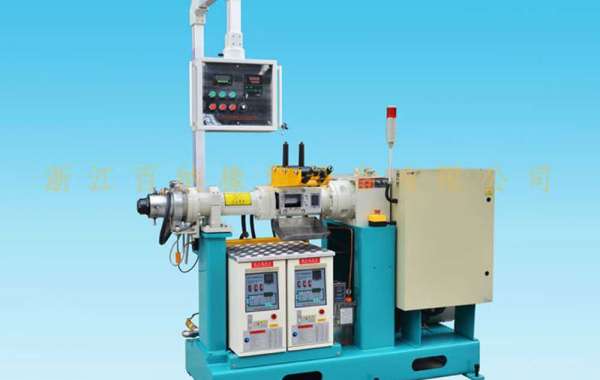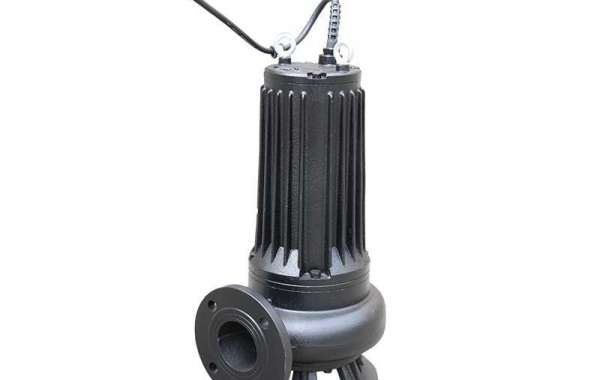The main engine of the rubber extruder is the extruder, which consists of an extrusion system, a transmission system and a heating and cooling system.
1. Extrusion system The extrusion system includes screw, barrel, hopper, head, and die. The plastic is plasticized into a uniform melt through the extrusion system, and under the pressure established in this process, the screw is continuously Extruder head.
(1) Screw: It is the most important part of the extruder. It is directly related to the application range and productivity of the extruder. It is made of high-strength, corrosion-resistant alloy steel.
(2) Cylinder: It is a metal cylinder, generally made of alloy steel or composite steel pipe lined with alloy steel that is heat-resistant, high-pressure-resistant, strong, wear-resistant, and corrosion-resistant. The barrel and the screw are matched to realize the crushing, softening, melting, plasticizing, exhaust and compaction of the plastic, and the continuous and uniform delivery of the rubber material to the molding system. Generally, the length of the barrel is 15-30 times its diameter, so that the plastic can be fully heated and plasticized as a principle.
(3) Hopper: The bottom of the hopper is equipped with a cutting device to adjust and cut off the material flow. The side of the hopper is equipped with a sight hole and a calibration metering device.
(4) Machine head and mold: The machine head is composed of an alloy steel inner sleeve and a carbon steel outer sleeve, and a forming mold is installed in the machine head. The function of the machine head is to transform the rotating plastic melt into parallel linear motion, uniformly and smoothly introduce it into the mold sleeve, and give the plastic the necessary molding pressure. The plastic is plasticized and compacted in the barrel, and flows into the molding die of the die through the neck of the die through the porous filter plate along a certain flow path. The die core and die sleeve are properly matched to form an annular gap with a decreasing cross-section, so that the plastic melt is in A continuous and dense tubular coating is formed around the core wire. In order to ensure that the plastic flow path in the die is reasonable and eliminate the dead angle of the accumulated plastic, a shunt sleeve is often installed. In order to eliminate pressure fluctuations during plastic extrusion, a pressure equalizing ring is also installed. The machine head is also equipped with a mold correction and adjustment device, which is convenient to adjust and correct the concentricity of the mold core and the mold sleeve.
According to the angle between the material flow direction of the die head and the center line of the screw, the extruder divides the die head into an oblique die head (with an angle of 120o) and a right angle die head. The shell of the machine head is fixed on the fuselage with bolts. The mold in the machine head has a mold core seat, and is fixed to the inlet port of the machine head with a nut. The mold core seat is equipped with a mold core, a mold core and a mold core seat. There is a hole in the center of the core for passing the core wire; a pressure equalizing ring is installed in the front of the machine head to equalize the pressure; the extrusion molding part is composed of a die sleeve seat and a die sleeve, and the position of the die sleeve can be adjusted by the bolt through the support , In order to adjust the relative position of the die sleeve to the die core, it is convenient to adjust the uniformity of the extruded layer thickness. The outside of the machine head is equipped with a heating device and a temperature measuring device.
2. Transmission system The function of the transmission system is to drive the screw and supply the torque and speed required by the screw in the extrusion process. It is usually composed of a motor, a reducer and a bearing.
3. Heating and cooling device Heating and cooling are necessary conditions for the plastic extrusion process to proceed.
(1) Now the extruder usually uses electric heating, which is divided into resistance heating and induction heating. The heating sheet is installed in the body, neck, and head of each part. The heating device externally heats the plastic in the cylinder to heat it up to reach the temperature required for the process operation.
(2) The cooling device is set up to ensure that the plastic is in the temperature range required by the process. Specifically, it is to eliminate the excess heat generated by the shear friction of the screw rotation, so as to prevent the plastic from decomposing, scorching or shaping difficult due to excessive temperature. Barrel cooling is divided into water cooling and air cooling. Generally, air cooling is more suitable for small and medium-sized extruders, and water cooling or a combination of the two types of cooling are used for large extruders. Screw cooling mainly uses central water cooling to increase the solids conveying rate of the material. , Stabilize the amount of glue and improve the quality of the product. However, the cooling at the hopper is to strengthen the conveying effect of solid materials and prevent the plastic particles from sticking and clogging the material opening due to heating, and to ensure the normal operation of the transmission part.








